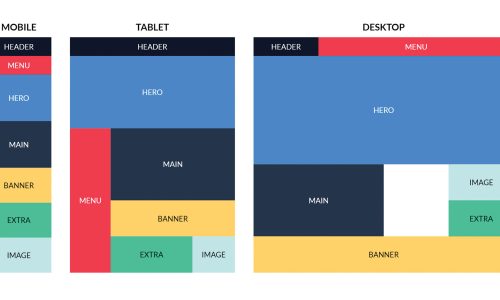
The Importance of Accessibility in Modern Web Development
- admin
- 28 November 2023
- Uncategorised
- 0 Comments
In the digital era, creating inclusive and accessible web experiences is not just a choice but a necessity. Web accessibility ensures that everyone, regardless of their abilities or disabilities, can access and use websites effectively. It’s an essential aspect of modern web development that not only promotes inclusivity but also aligns with ethical, legal, and business imperatives.
What is Web Accessibility?
Web accessibility refers to the practice of designing and developing websites and applications that can be used by people of all abilities, including those with disabilities. It involves removing barriers that might prevent access to information or interaction with digital content.
Key Aspects of Web Accessibility:
- Perceivable: Information and content should be presented in a way that users can perceive it, using multiple sensory modalities (such as sight, hearing, or touch).
- Operable: Users should be able to navigate and operate the website interface using various input methods, such as a keyboard, mouse, or assistive technologies.
- Understandable: The content and functionality of a website should be clear and easy to understand for all users.
- Robust: Websites should be developed using technologies that ensure compatibility with different assistive technologies and future web standards.
Why Accessibility Matters:
1. Inclusivity and Equal Access
Web accessibility ensures that everyone, including individuals with disabilities, can access and engage with digital content. It promotes equal opportunities and inclusion, allowing individuals to participate fully in society, education, and the economy.
2. Legal Compliance and Regulations
Many countries have laws and regulations mandating web accessibility. For instance, the Americans with Disabilities Act (ADA) in the United States and the Web Content Accessibility Guidelines (WCAG) provide standards and guidelines for ensuring accessibility. Non-compliance can result in legal implications and potential lawsuits.
3. Improved User Experience and SEO
Creating accessible websites often leads to better user experiences for everyone. Clear navigation, readable content, and optimized multimedia benefit all users. Additionally, search engines like Google consider accessibility as a ranking factor, improving a website’s SEO performance.
4. Business Benefits and Market Reach
Embracing accessibility expands a website’s audience reach. It allows businesses to tap into a larger market segment and gain a competitive edge by catering to the needs of diverse user groups.
Implementing Accessibility in Web Development:
1. Semantic HTML and Proper Markup
Using semantic HTML tags and proper markup helps screen readers and other assistive technologies understand the structure and context of content, improving accessibility for users.
2. Keyboard Accessibility
Ensuring that all website functionalities are operable via keyboard navigation is crucial for users who cannot use a mouse. This includes focus states, skip navigation links, and accessible forms.
3. Alternative Text for Images and Multimedia
Providing descriptive alt text for images and transcripts or captions for multimedia content helps users who rely on screen readers or those with visual or auditory impairments.
4. Testing and User Feedback
Regularly testing websites using accessibility evaluation tools and incorporating user feedback from individuals with disabilities aids in identifying and rectifying accessibility issues.
Conclusion
Web accessibility is a cornerstone of modern web development, contributing to a more inclusive and equitable online environment. By prioritizing accessibility principles and integrating them into the development process, web developers can create websites that not only comply with legal requirements but also provide an exceptional user experience for all individuals, regardless of their abilities.



